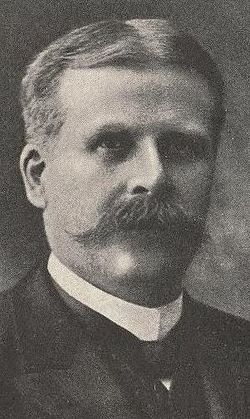Gustav Adolph Guldberg
| Gustav Adolph Guldberg | |
 Gustav Adolph Guldberg | |
| Född | 27 oktober 1854 Nannestad, |
|---|---|
| Död | 23 april 1908 (53 år) Kristiania, |
| Nationalitet | Norsk |
| Yrke/uppdrag | Anatom Antropolog |
Gustav Adolph Guldberg, född den 27 oktober 1854 i Nannestad, död den 23 april 1908 i Kristiania (nuvarande Oslo), var en norsk anatom och antropolog, son till Carl August Guldberg, bror till Cato och Axel Guldberg.
Guldberg blev konservator i zootomi 1879, professor i anatomi i Kristiania 1887 och sekreterare i norska vetenskapsakademien 1903. Han studerade under talrika resor valarna och påvisade hos dem bland annat rudimentära bakre extremiteter. Guldberg anlade stora antropologiska samlingar, företog utgrävningar från vikingatiden och bearbetade förtjänstfullt de vid dessa funna kranierna.
Källor
- Svensk uppslagsbok Malmö, 1932.
Externa länkar
- Guldberg, 4. Gustav Adolf i Nordisk familjebok (andra upplagan, 1909)
|
Media som används på denna webbplats
Författare/Upphovsman: Gutten på Hemsen, Licens: CC0
Flag of Norway with colors from the previous version on Commons. This file is used to discuss the colors of the Norwegian flag.
Flag of Norway In 1844 a union badge combining Norwegian and Swedish colors was placed at the hoist of both countries' flags. The badge was popularly called Sildesalaten ("the herring salad") from its resemblance to a herring salad. Initially, the union flag was popular in Norway, since it clearly denoted the equal status of the two united states. But as the union with Sweden became increasingly less popular, the Norwegian parliament abolished the union badge from the national (merchant) and state flags in 1899. At the dissolution of the union in 1905, the badge was removed from the navy flag as well. Sweden kept it in all flags until 1905.


